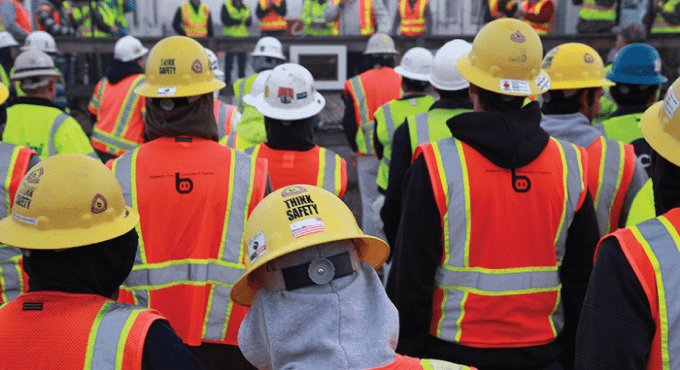
There's no doubt a corporate safety program is essential for protecting your employees and your bottom line, but what if that program isn't working as well as it should be? A broken corporate safety program can seriously affect productivity if it's not preventing absenteeism due to illness or injury.
Safety programs are complex and can be difficult to fix, especially when you're not familiar with the elements of a successful one. If you've been given the task of reviving your corporate safety program and you don't know where to begin, we've compiled a list of five core components you can reference to guide you through the process.
While every organization's safety program will be different, you can still use this as a general guideline for identifying missing elements or areas for improvement, and getting your program back to supporting the best interests of your organization. By following these five guidelines, we hope to help you get your incidents of injury and illness down to zero.
Working With Chemicals
Do members of your team work with dangerous chemicals? Ensure they know proper procedures for handling them, and what to do in case of problems. This information should be given to the affected employees, with emergency information posted clearly in their work area.
Operating Machinery
If employees are operating vehicles, heavy machinery, or dangerous tools on the job, ensure they have undergone the corresponding safety training and have the appropriate licenses. They should also know what to do in case of injury involving the machinery, so be sure that information is posted clearly in the work area.
Personal Work Environment
Whether your employees are sitting at desks, lifting heavy items on the factory floor, or working up high or in confined spaces, you should take precautions to reduce the risk of injury due to repetitive strain or other ergonomic issues resulting from their work environment.
Personal Protective Equipment
Do all employees have the personal safety equipment (PPE) they need to protect themselves from injury? Evaluate every role and task to be sure. If PPE has been distributed, ensure that it is being used at all times, and that correct procedures are being followed.
Personalized Safety Coaching
Safety can mean different things for different organizations and different people within those organizations. To improve effectiveness of your safety program, it's a smart idea to personally coach each employee on their unique safety requirements. That way, you know they have all the information and equipment they need to prevent injury and illness on the job.
By using these five components as your guide, you should be able to cover all essential areas of an effective corporate safety program and spot opportunities for improvement. Taking the time to thoroughly evaluate your program might seem like a tedious task, but it's worth it in the long run if you can reduce your organization's incidents of injury and illness to zero. It's a smart move for the safety of your people, and for your bottom line.










